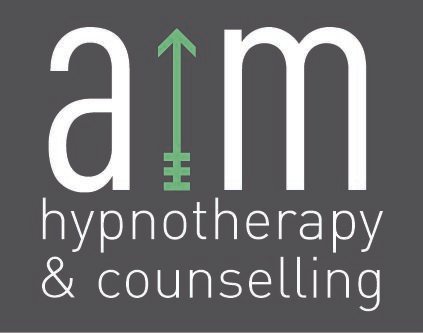AIM to Treat Anxiety
“You don’t have to believe everything you think. You can grow stronger than your anxious mind”
Anxiety is one of the most common mental health challenges in Canada, affecting hundreds of thousands of people. Many individuals, especially women, experience chronic worry, tension, physical discomfort, panic, or overwhelm without ever receiving a diagnosis.
Whether or not you identify with “generalized anxiety disorder,” the reality is the same: anxiety can make life feel smaller, harder, and exhausting.
But there is hope as it is treatable.
What Anxiety Really Is
Anxiety is a natural and protective response to uncertainty. Evolutionarily, it helped our ancestors survive by alerting them to danger and activating the fight-or-flight response.
Today, our bodies still react as though modern stressors are life-threatening:
a difficult email
a crowded bus or skytrain
a performance review
conflict with a partner or friend
social situations
unexpected change
Even when we know we are safe, our nervous system may still sound the alarm.
Chronic anxiety often means our internal “danger detector” is overactive, firing signals that no longer match the reality of our environment.
When anxiety is just too much
Anxiety can show up in many ways:
racing thoughts
IBS and stomach issues
insomnia
perfectionism
procrastination
emotional overwhelm
panic
avoidance or isolation
relationship strain
It can also affect self-esteem, leading people to underestimate their ability to cope or believe that stress will end in disaster. Over time, this becomes painful and limiting.
The Challenge
Managing anxiety isn’t about “getting rid of it.”
It’s about learning how to:
regulate the nervous system
reduce reactivity
increase tolerance for stress
build emotional resilience
shift unhelpful thought patterns
understand the subconscious signals driving fear
learn what might be underneath that feeling or sensation
address the thought or memories that think are too big to face
When you strengthen your ability to meet stress with confidence, every facet of your life expands.
Aim Approach to Treating Anxiety
Evidence-based. Compassion-centered. Neuroscience-informed.
At AIM Hypnotherapy & Counselling, we use an integrative approach rooted in research and clinical experience. Our work is grounded in:
Clinical hypnotherapy
Somatic regulation
Nervous system education
Trauma-informed counselling
CBT, IFS principles, and subconscious reprocessing
Step 1 — Understanding Your Anxiety
We begin with one-on-one counselling focused on:
exploring the emotional roots of anxiety
understanding learned coping patterns
identifying triggers and nervous system responses
creating safety, trust, and clarity
This foundation allows us to personalize treatment, rather than using a one-size-fits-all approach.
Step 2 - Interventions for Deep, Lasting Change
There are several different modalities we can use to change your relationship to anxiety. What we are seeking is reprocessing of past experiences in a safe and grounded state. Essentially we are seeking unlearning old patterns and learning new ways of being. With guidance and support you will experience what therapists call “corrective experiences” which rewire your brain and nervous system towards safety and vitality.
Why use Hypnotherapy? Grounded in neuroscience, evidence backed and highly enjoyable and therapeutic state for processing and self discovery. Hypnosis is often described as a highly relaxed, focused state. Similar to daydreamin the mind becomes more open to learning, calm, and emotional integration.
Research shows hypnotherapy can:
reduce anxiety and stress
increase self-confidence
regulate emotional responses
shift subconscious patterns
support long-term resilience
Clients often describe hypnosis as grounding, soothing, and transformational.
It allows both the conscious and subconscious mind to learn new ways of responding to stress.
Why Our Methods Works
This two-step approach combines:
emotional insight
nervous system regulation
subconscious reprocessing
practical tools for daily life
This method is not designed for temporary coping's his approach helps you experience real, lasting relief.
Therapy does’t need to be about digging up the past.
You don’t have to worry about talking through old painful memories to alleviate anxiety.
If you’re ready to explore how this approach can help you, or if you have questions, I invite you to reach out or schedule a no fee indroduction session.
REFERENCES
- Holdevici, Irina., Carcium, Barbara. (2010). The use of Ericksonian hypnosis in somatic disorders. Social and Behavioral Sciences. Vol 33, 75–79. Elsevier. DOI: 10.1016/j.sbspro.2012.01.086.
- Kahn, Stephen. (2010). Stress and Anxiety. In Barabasz, Arreed Franz (Ed); Olness, Karen (Ed); Boland, Robert (Ed); Kahn, Stephen (Ed). Medical Hypnosis Primer: Clinical and Research Evidence. (pp. 83- 86). New York, NY, US: Routledge/Taylor & Francis Group. DOI: Unknown.
- Smith, W (1990). Hypnosis in the treatment of anxiety. Bulletin of the Menninger Clinic. 54(2), 209-216. DOI: Unknown.
- Statistics Canada. (2013). Canadian Community Health Survey: Mental Health, 2012. Last updated September 18, 2013. http://www.statcan.gc.ca/daily-quotidien/130918/dq130918a-eng.htm (Accessed February 12, 2016).

